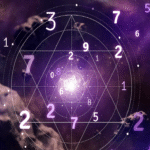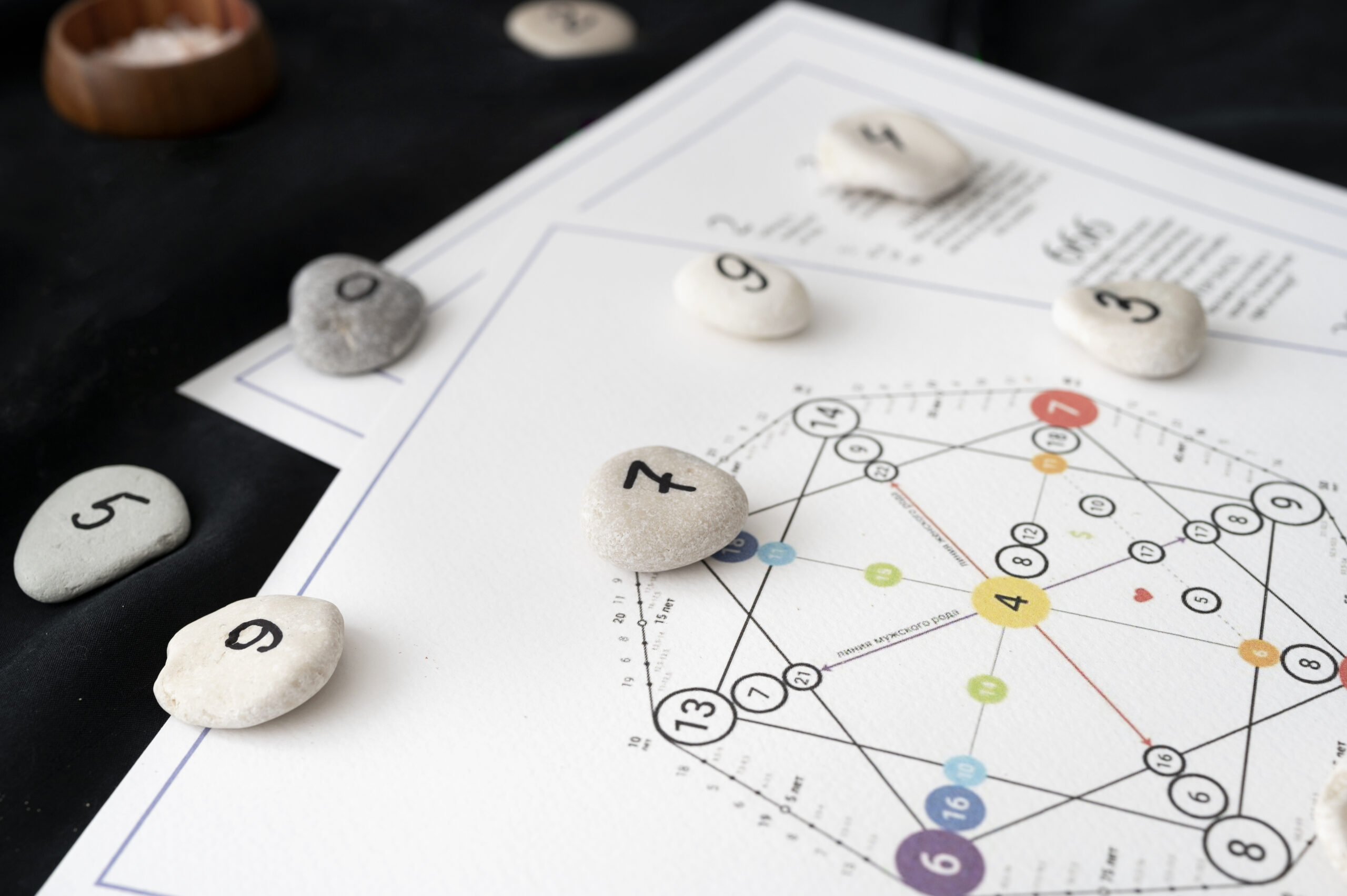The Celestial Foundations
Imagine your life as a grand theater production, with each aspect—your physical appearance, wealth, relationships, career, spiritual growth—playing out on different parts of the stage. In Vedic astrology, or Jyotish, these distinct areas of life experience are represented by the 12 houses, or bhavas, which form the foundational framework upon which all astrological interpretation is built.
Unlike planets that move through the zodiac, houses remain fixed as segments of the celestial sphere, with each house governing specific domains of human experience. The planets, as they transit through these houses in your birth chart, activate and influence these life areas according to their nature and the relationships they form with other celestial bodies.
Understanding the bhavas is essential for any meaningful astrological analysis. They determine where planetary energies will express themselves in your life and provide the context for interpreting the complex interplay of cosmic influences that shape your journey.
In this comprehensive exploration, we’ll examine the Vedic house system from multiple perspectives: the traditional Vedic scholar’s view rooted in classical texts, the modern practitioner’s psychological approach, the student’s learning journey, and practical applications for everyday life. Whether you’re beginning your study of Vedic astrology or seeking to deepen your existing knowledge, this multi-dimensional exploration will provide valuable insights into how houses shape your life experience.
The Participants in Our Celestial Council
To provide a rich, multi-faceted understanding of the Vedic house system, we’ve assembled a council of experts representing different perspectives:
- Pandit Sharma – Traditional Vedic Astrologer with over 40 years of experience in classical Jyotish
- Dr. Maya Patel – Modern Jyotish Practitioner with backgrounds in psychology and Vedic astrology
- Raj Kumar – Dedicated Student in his fifth year of systematic Jyotish study
- Anita Desai – Practical Application Expert who specializes in translating astrological insights into life strategies
Their collective wisdom offers a comprehensive view of how the 12 houses operate in Vedic astrology and how this knowledge can be applied in contemporary life.
Round 1: Understanding Vedic Houses from Multiple Angles
Pandit Sharma: “The concept of houses or bhavas is fundamental to Jyotish and has remained largely unchanged for thousands of years. In Sanskrit texts, houses are referred to as ‘bhavas,’ which literally means ‘state of being’ or ‘becoming.’ This terminology reveals the dynamic nature of houses—they represent not just static areas of life but processes of manifestation and experience.
“Traditionally, we use what Western astrologers would call the Whole Sign house system, where each house corresponds to an entire sign. The house that contains the ascending degree at birth—the eastern horizon point—becomes the first house or Lagna, representing the physical body and self-projection. From there, we count counterclockwise, with each subsequent sign becoming the next house.
“Each house has primary significations described in classical texts like Brihat Parashara Hora Shastra and secondary significations that have developed through centuries of observation. The strength of a house is assessed through several factors: the placement of its lord, aspects to the house, planets occupying it, and special strengths like directional strength (dig bala).”
Dr. Patel: “While honoring the traditional framework, modern practitioners also recognize the psychological dimensions of each house. We understand that houses represent both external circumstances and internal states—two sides of the same coin.
“For example, the fourth house traditionally governs mother, home, and property. Psychologically, it represents our sense of emotional security, inner peace, and the foundation of our psyche. When analyzing a difficult fourth house, we might see both external challenges related to housing or family and internal struggles with emotional security.
“Modern practitioners also consider how house significations have evolved to include contemporary life elements that didn’t exist in ancient times. The third house of communication now encompasses not just siblings and courage but also modern communications technology and media. The tenth house of career now includes corporate structures and professional identities that differ from the royal patronage systems of ancient India.”
Raj Kumar: “As a student, I found it extremely helpful to understand houses through their elemental and modal qualities, as well as their natural planetary and sign associations. For instance, angular houses (1, 4, 7, 10) are considered the strongest and most action-oriented, similar to cardinal signs in Western astrology.
“I also learned to group houses by their dharma (life purpose) associations:
- Dharma Houses (1, 5, 9): Purpose, creativity, and higher knowledge
- Artha Houses (2, 6, 10): Resources, work, and worldly achievement
- Kama Houses (3, 7, 11): Desires, relationships, and aspirations
- Moksha Houses (4, 8, 12): Emotional foundations, transformation, and spiritual liberation
“This organization helped me see the interconnections between houses and understand how they collectively describe the full spectrum of human experience—from material concerns to spiritual awakening.”
Anita Desai: “In my client work, I’ve found that explaining houses as ‘domains of life experience’ makes this concept immediately accessible. I often use the metaphor of a house with 12 rooms, each dedicated to a different aspect of life.
“What’s crucial to understand is that even if a house appears empty in your birth chart—meaning no planets occupy it—that life area is still very much active and important. The house’s quality is then primarily determined by its ruling planet and where that planet is placed.
“For example, if your seventh house of partnership has no planets but is ruled by Venus, and Venus is well-placed in your ninth house of fortune, this suggests favorable partnership opportunities potentially connected to higher education, travel, or spiritual communities. Understanding these house-to-house relationships is key to practical chart interpretation.”
Round 2: Common Misconceptions vs. Reality
Pandit Sharma: “One pervasive misconception is that empty houses are somehow ‘weak’ or unimportant in a person’s life. This is completely false. Every house is significant, whether occupied or not. An empty house simply means that its significations are primarily determined by its ruling planet’s placement and condition.
“Another misconception is confusing house position with house rulership. For example, Venus in the seventh house is different from Venus ruling the seventh house but placed elsewhere. In the first case, Venus directly influences partnerships by its presence; in the second, it connects the house it occupies with partnership matters. This distinction is critical for accurate interpretation.”
Dr. Patel: “I frequently encounter the misconception that malefic planets in houses are always detrimental. This oversimplification misses the nuance of Vedic astrology. For instance, Saturn in the tenth house can bring delays in career but often indicates long-term professional achievement and authority positions.
“Similarly, many assume that Vedic and Western house meanings are identical. While there are similarities, Vedic astrology places unique emphasis on certain significations. For example, the ninth house in Vedic astrology has a stronger connection to father figures than in Western traditions, while the fourth house more specifically connects to mother. The eighth house has special significance for longevity and transformation that differs somewhat from Western interpretations.”
Raj Kumar: “As a student, I initially struggled with the misconception that house interpretations are the same across all charts. In reality, the same house placement can manifest very differently depending on the overall chart context. A twelfth house Jupiter might indicate spiritual seclusion in one chart but professional work in foreign lands in another, depending on aspects, house lordship, and other factors.
“I also mistakenly believed that divisional charts replace the main chart’s house interpretations. I eventually learned that divisional charts add layers of detail to specific life areas but don’t negate the foundational meanings in the birth chart. For example, the Navamsa (D-9) chart provides deeper insights into marriage but doesn’t replace seventh house analysis in the birth chart.”
Anita Desai: “Many clients come to me believing that difficult placements in certain houses doom those life areas permanently. I help them understand that challenging placements often indicate areas for growth and transformation, not permanent obstacles.
“For example, a client with Saturn in the seventh house feared she would never marry or would have only difficult relationships. I showed her how this placement, while potentially delaying marriage, could ultimately lead to a mature, stable partnership—especially during favorable planetary periods. She later married at age 35 and has built a solid, supportive relationship that benefits from the Saturnian qualities of commitment and responsibility.”
Round 3: Historical Evolution & Future Directions
Pandit Sharma: “The concept of houses can be traced to the earliest astrological traditions of India. The Brihat Parashara Hora Shastra, composed approximately 2,000 years ago, outlines detailed house significations that remain fundamental to practice today. The twelve-fold division correlates with natural cosmic cycles and has proven its validity through millennia of practical application.
“Over centuries, commentaries by sages like Varahamihira, Kalyana Varma, and Mantreswara expanded our understanding of house interpretations. The Jaimini tradition added special insights like the Karakamsa—the placement of the Atmakaraka (soul significator) in the Navamsa chart—which reveals profound spiritual and karmic dimensions of house meanings.
“The tradition continues to evolve while maintaining its essential principles. For instance, the concept of Bhavat Bhavam—examining the house that is the same number of houses away from a particular house as that house is from the first house—has become increasingly important in contemporary practice for understanding the interconnections between life areas.”
Dr. Patel: “Modern research is revealing fascinating correlations between traditional house meanings and contemporary developmental psychology. The sequence of houses from first to twelfth parallels human development from self-awareness to transcendence of self.
“Brain imaging studies show that different cognitive functions activate distinct regions of the brain, which interestingly correlate with the traditional meanings of houses. For example, the third house of communication corresponds to language processing areas, while the eighth house of transformation correlates with regions involved in processing fear and profound change.
“Looking ahead, I see Vedic house analysis incorporating more adaptive approaches based on cultural context and individual circumstances. While the core principles remain constant, their expression evolves as human society changes. For instance, the second house now encompasses digital assets and intellectual property—concepts that didn’t exist when the classical texts were written but follow the same principles of personal resources.”
Raj Kumar: “The way houses are taught has transformed dramatically with modern technology. When I began studying Jyotish, complex calculations and memorization were significant barriers. Today’s software and online resources allow students to focus more on interpretation and application rather than computational mechanics.
“Interactive learning platforms now enable students to see how houses function dynamically, with visual representations of how planets transit through houses and activate different life areas. These tools have democratized access to Vedic knowledge that was once available only through years of apprenticeship.
“I’m particularly excited about the integration of traditional house analysis with contemporary counseling approaches. Modern students are learning not just what houses signify but how to communicate these insights effectively and ethically to help people navigate life challenges.”
Anita Desai: “I’ve witnessed a significant evolution in how house analysis is applied in practical guidance. Where once astrologers might have given fatalistic predictions based on house placements, today’s approach emphasizes empowerment and conscious navigation of planetary energies.
“For example, rather than simply predicting challenges from difficult eighth house placements, we now focus on how these energies can be channeled toward positive transformation and psychological growth. This shift respects the traditional knowledge while making it more relevant and constructive for contemporary life.
“I see the future of house analysis moving toward more personalized, adaptive interpretations. The general principles remain consistent, but their application considers the individual’s unique circumstances, level of awareness, and cultural context. This evolution makes Vedic wisdom more accessible and applicable across diverse backgrounds while maintaining its authentic core.”
The 12 Houses: Essential Significations and Modern Applications
To provide a practical reference, here’s an overview of the 12 houses with their traditional significations and contemporary applications:
First House (Tanu Bhava)
Traditional Significations: Physical body, appearance, personality, birth, overall health and vitality, self-projection Modern Applications: Personal brand, first impressions, self-development, physical wellness practices, personal style
Pandit Sharma: “The first house represents not just the physical body but also how one projects oneself into the world—the face we show others.”
Dr. Patel: “Psychologically, the first house relates to identity formation and self-concept—how we perceive ourselves and how we wish to be perceived.”
Second House (Dhana Bhava)
Traditional Significations: Wealth, family resources, speech, food, early childhood Modern Applications: Personal finance, income streams, value systems, self-worth, dietary habits
Raj Kumar: “I find it helpful to think of the second house as ‘what sustains me’—both materially through resources and physically through food.”
Anita Desai: “In client work, second house analysis often reveals not just financial patterns but underlying attitudes toward security and worth.”
Third House (Sahaja Bhava)
Traditional Significations: Siblings, courage, communication, short journeys, neighbors, hands and arms Modern Applications: Social media presence, writing skills, local networking, everyday communications, adaptability
Pandit Sharma: “The third house governs not just communication but the courage to express oneself—these significations are deeply connected.”
Dr. Patel: “In our digital age, the third house has expanded to include all forms of communication technology and our relationship with media consumption.”
Fourth House (Sukha Bhava)
Traditional Significations: Mother, home, property, emotional well-being, vehicles, heart, education Modern Applications: Work-from-home arrangements, emotional intelligence, real estate investments, sense of belonging
Anita Desai: “Fourth house remediation is often essential for clients struggling with work-life balance, as it governs both our inner and outer sanctuary.”
Raj Kumar: “The connection between the fourth house and education in Vedic astrology reflects the traditional view that foundational learning happens in the home.”
Fifth House (Putra Bhava)
Traditional Significations: Children, creativity, intelligence, romance, mantra practice, speculation Modern Applications: Creative projects, investment portfolios, recreational activities, teaching abilities, dating experiences
Pandit Sharma: “The fifth house represents not just physical children but all forms of creation—artistic, intellectual, and spiritual.”
Dr. Patel: “There’s a fascinating connection between the fifth house’s dual signification of children and intelligence—both represent the expression of our creative potential.”
Sixth House (Ripu Bhava)
Traditional Significations: Enemies, obstacles, illness, debt, service, maternal relatives Modern Applications: Workplace dynamics, competitive situations, health maintenance routines, stress management, service professions
Raj Kumar: “Understanding the sixth house helped me reframe obstacles as opportunities for growth rather than simply as problems.”
Anita Desai: “Many clients benefit from sixth house remediation when facing workplace conflicts or recurring health challenges.”
Seventh House (Yuvati Bhava)
Traditional Significations: Spouse, partnership, business relationships, travel, public interactions Modern Applications: Dating apps, professional networking, contracts and agreements, collaborative projects, public reputation
Pandit Sharma: “The seventh house represents our complementary opposite—how we balance ourselves through relationships with others.”
Dr. Patel: “Beyond romantic partnerships, the seventh house reveals how we approach all one-on-one relationships and our capacity for compromise.”
Eighth House (Mrityu Bhava)
Traditional Significations: Longevity, transformation, hidden knowledge, inheritance, death, research Modern Applications: Psychological therapy, crisis management, insurance planning, investment in others’ resources, profound personal changes
Anita Desai: “Eighth house placements often indicate where clients will experience their most profound personal transformations.”
Raj Kumar: “The eighth house taught me about the relationship between vulnerability, intimacy, and transformation in the human experience.”
Ninth House (Dharma Bhava)
Traditional Significations: Fortune, higher education, spiritual teacher, father, long journeys, religious practice Modern Applications: Advanced degrees, publishing, ethical frameworks, mentorship, philosophical worldview, international connections
Pandit Sharma: “The ninth house represents not just what we believe but how we integrate those beliefs into a meaningful life philosophy.”
Dr. Patel: “In psychological terms, the ninth house relates to the frameworks we use to make meaning of our experiences and construct our worldview.”
Tenth House (Karma Bhava)
Traditional Significations: Career, public reputation, authority, government, father (in some traditions), actions in the world Modern Applications: Professional brand, social media presence, leadership style, societal impact, work-life integration
Raj Kumar: “The tenth house represents not just what work we do but how we contribute to society through our actions.”
Anita Desai: “Tenth house analysis is essential for clients seeking purpose and recognition in their professional lives.”
Eleventh House (Labha Bhava)
Traditional Significations: Gains, income from career, friends, elder siblings, social networks, fulfillment of desires Modern Applications: Online communities, professional networks, passive income streams, social activism, group memberships
Pandit Sharma: “The eleventh house shows not just friendship but how we connect to the larger community and receive support from groups.”
Dr. Patel: “There’s an interesting psychological correlation between the eleventh house’s governance of both friendships and the fulfillment of desires—we often achieve our goals through our networks.”
Twelfth House (Vyaya Bhava)
Traditional Significations: Losses, expenditure, foreign residence, spirituality, isolation, liberation, bed pleasures, the subconscious Modern Applications: Meditation practice, charitable giving, international career, retreat experiences, psychological shadow work
Anita Desai: “Many clients fear twelfth house placements, but I help them see how these can indicate profound spiritual gifts and opportunities for service.”
Raj Kumar: “Understanding the twelfth house helped me appreciate the value of solitude and surrender in spiritual growth.”
Integrating House Analysis with Other Chart Factors
Pandit Sharma: “Accurate house interpretation requires integrating multiple factors. The house’s inherent nature, the sign it occupies, planets within it, aspects to it, and most importantly, the placement and condition of its ruling planet all contribute to its expression.
“For example, the seventh house of marriage might be empty but ruled by Venus placed in the eleventh house of gains and fulfillment. This suggests partnerships that bring social connection and help fulfill desires. If that Venus is well-aspected by Jupiter, it indicates fortunate, growth-oriented relationships.
“This integrated approach reveals subtleties that isolated analysis would miss. Houses never function in isolation but as part of an interconnected system.”
Dr. Patel: “I find house lord analysis particularly revealing. When a planet rules multiple houses, it creates a connection between different life areas. For instance, if Mercury rules both the first house of self and the tenth house of career, the person’s identity and professional life are intrinsically linked.
“These house lord relationships often explain why certain life areas develop in parallel or why events in one domain trigger changes in another. This holistic perspective reflects the interconnected nature of life itself.”
Raj Kumar: “Learning to analyze houses in divisional charts (vargas) was a significant breakthrough in my studies. Each divisional chart provides a magnified view of specific life areas:
- D-9 (Navamsa) for marriage and spiritual growth
- D-10 (Dashamsha) for career and public standing
- D-7 (Saptamsha) for children and creativity
- D-4 (Chaturthamsha) for property and assets
“These divisional charts don’t replace the birth chart but add layers of detail to house analysis. When I see consistent patterns across multiple divisional charts, I can be more confident in my interpretations.”
Anita Desai: “In practical application, I’ve found that examining the relationship between houses that share natural connections provides valuable insights. For instance:
- Fifth and ninth houses both relate to knowledge and wisdom
- Second and eleventh houses both connect to financial resources
- Fourth and tenth houses both relate to parents and foundations
“These natural relationships help clients understand how different life areas influence each other. For example, fifth house creative development often supports ninth house purpose, while fourth house emotional security frequently impacts tenth house career performance.”
Closing Reflections: Integrating Wisdom for Today’s Astrologer
Pandit Sharma: “The houses remain the foundation upon which all astrological interpretation rests. They define where and how planetary energies will manifest in a person’s life. Without clear understanding of the houses, even the most detailed planetary analysis lacks context and practical application.”
Dr. Patel: “I encourage astrologers to honor traditional house meanings while remaining open to their evolving expressions in contemporary life. The principles remain constant, but their manifestations adapt to changing social structures and technologies.”
Raj Kumar: “For students, I recommend starting with the basic meanings but quickly advancing to understanding how house lords, aspects, and house relationships create a complex tapestry of influences. Every chart tells a unique story through its house arrangements.”
Anita Desai: “Ultimately, house analysis should empower individuals to navigate life more consciously. When I help clients understand which houses are activated during particular periods, they can align their efforts with cosmic rhythms rather than struggling against them.”
Further Learning: Advancing Your House Knowledge
For those seeking to deepen their understanding of the Vedic house system, our experts recommend these areas for further study:
Specialized House Techniques
- Bhavat Bhavam: The principle of “house from house” analysis
- Argala (Intervention): How planets in specific houses relative to another house can support or obstruct it
- Karaka Bhavas: The relationship between planetary significators and the houses they represent
- Arudha Padas: Manifestation points that show how houses express in the material world
House Analysis in Divisional Charts
- Using the Navamsa (D-9) chart for deeper relationship insights
- Career analysis through the Dashamsha (D-10) chart
- Property matters in the Chaturthamsha (D-4) chart
- Health assessment in the Shashtiamsha (D-60) chart
Predictive House Techniques
- Timing house-related events through transits to house lords
- Annual chart (Varshaphal) house activation
- Dasha-based house activation sequences
- Progressive house emphasis throughout the life cycle
Remedial Measures for Houses
- Strengthening weak houses through planetary remedies
- Directional remedies based on house associations
- Room arrangement and architecture based on house significations
- Lifestyle adjustments to enhance positive house expressions
The study of houses in Vedic astrology offers a lifetime of learning and application. As you deepen your understanding of these fundamental divisions of the celestial sphere, you gain insight not just into specific life areas but into the interconnected nature of human experience itself. The houses reveal that no aspect of life exists in isolation—each domain influences and is influenced by others, creating the rich tapestry of your unique journey.









